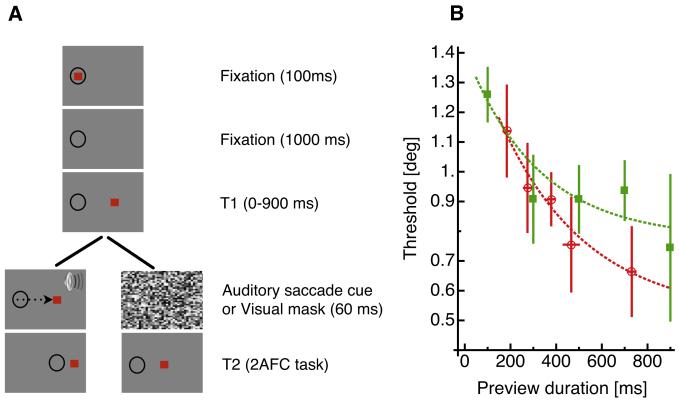Fig. 4.
(A) Experimental setup for saccade and fixation trials. The black circles indicates eye position. The red squares indicate targets for fixation or saccades. A trial started with subjects directing gaze to a fixation point. After 100 ms, the fixation point was turned off and subjects continued to maintain fixation on the blank screen. The saccade target T1 appeared 1000 ms later. In the saccadee trials subjects saccaded to the target on auditory cue 0–500 ms after saccade target onset. As soon as the saccade was detected, the saccade target was displaced either leftwards or rightwards (T2). At the end of the trial, the subject indicated the direction of the target displacement by key press. In the fixation trials subjects maintained fixation at the position of the fixation point for the entire trial. T1 was displayed for 0–900 ms, and followed by 60 ms of high-contrast mask (simulating the masking effect of the saccade). T2 was then displayed leftwards or rightwards of its original position and subjects reported the direction of the shift by key press. (B) Displacement thresholds (geometric mean of thresholds, calculated separately for all subjects) for the saccade (shown in red) and the fixation (shown in green) condition as a function of presentation duration. Saccade latencies were measured for all trials, and target presentation time binned into 100 ms bins. Error bars represent standard error across subjects. The continuous curves show exponential fits to the data. (For interpretation of the references to color in this figure legend, the reader is referred to the web version of the article.)

